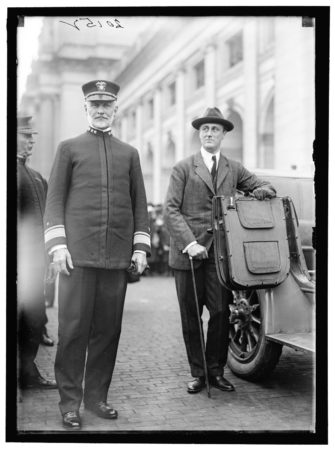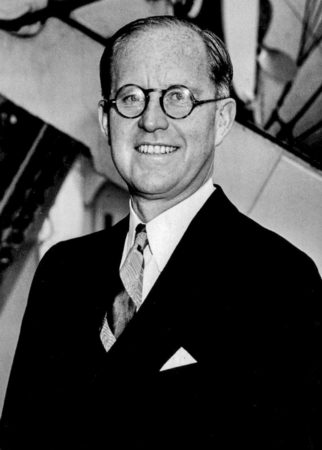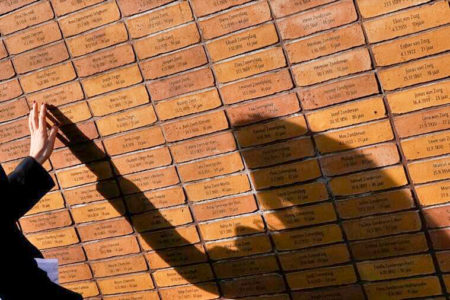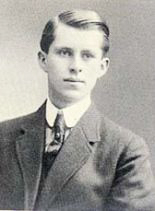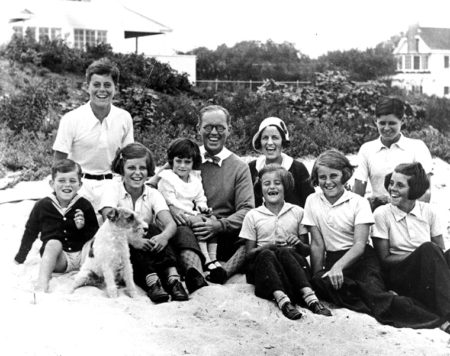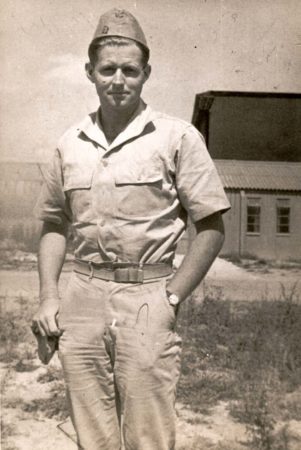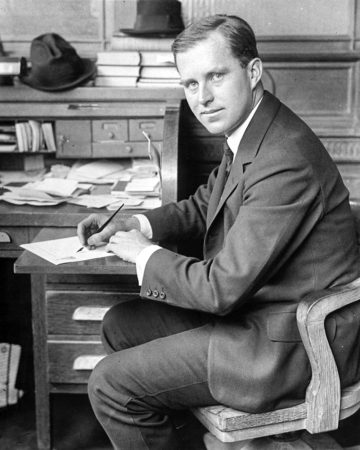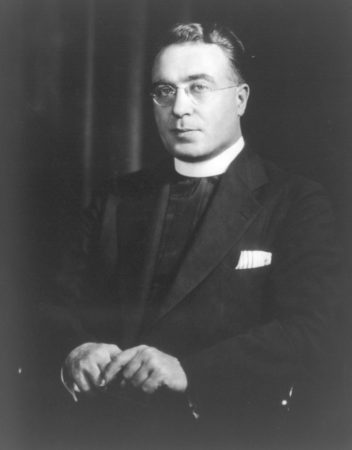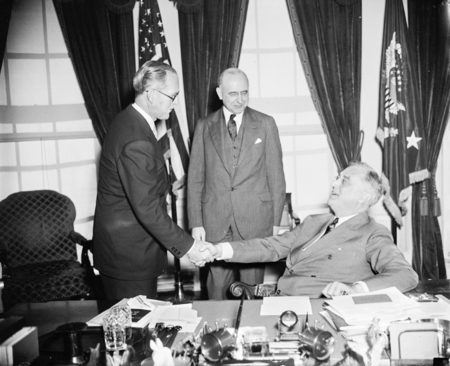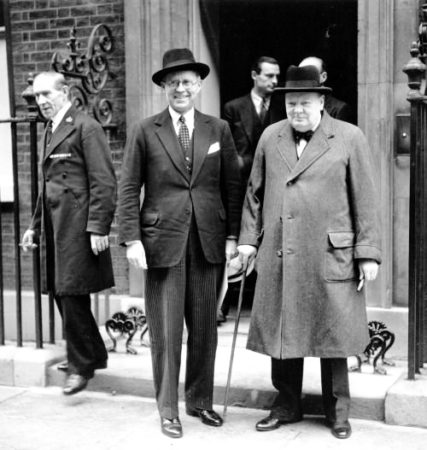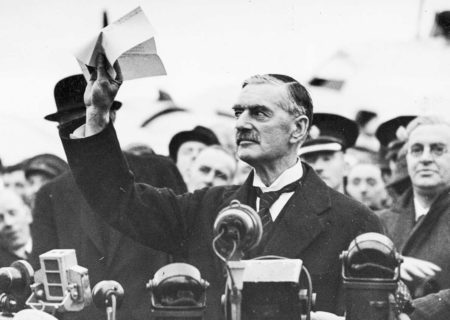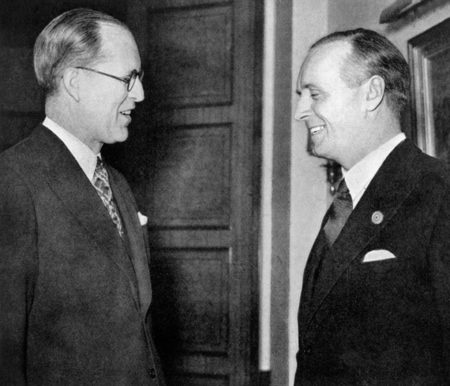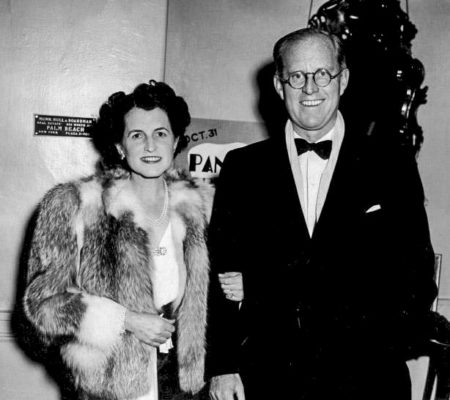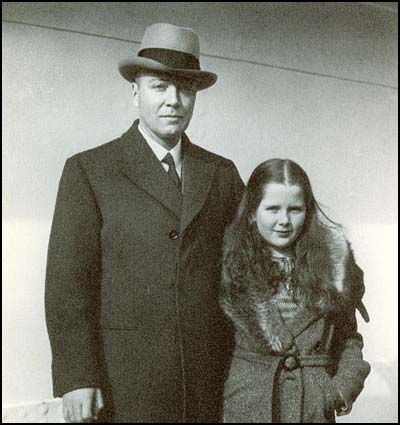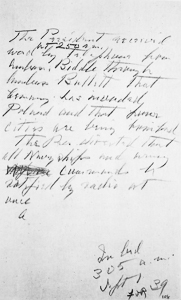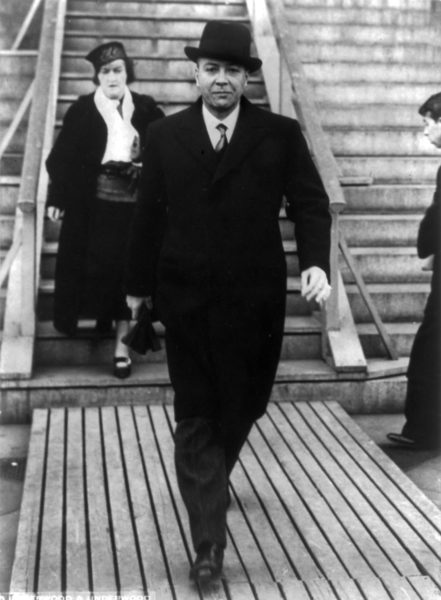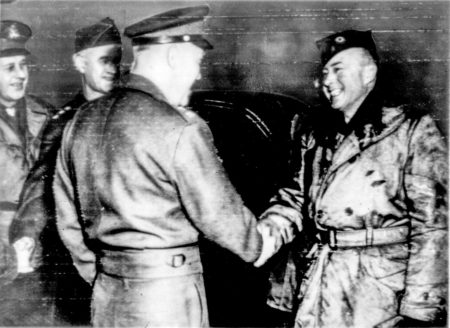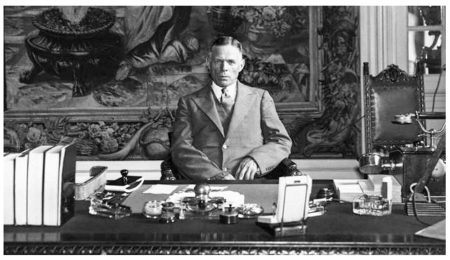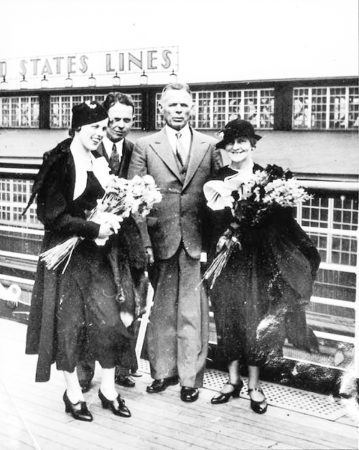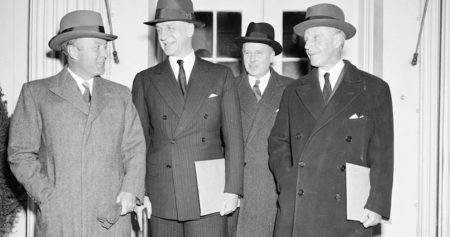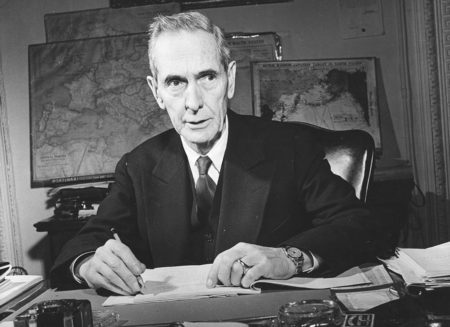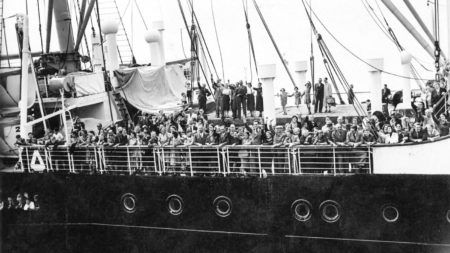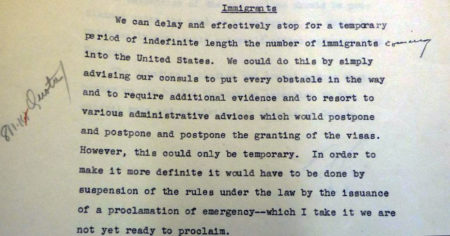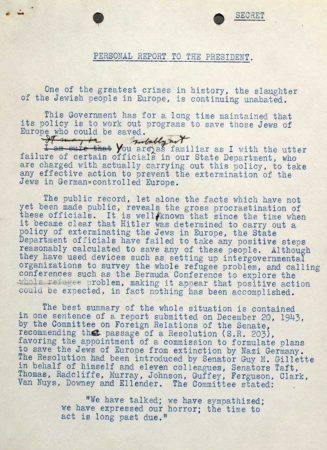As I’ve pointed out before, most of the stories about the war in Europe during World War II center around the Americans, British, French, and German-occupied countries. Rarely have books been written about the Soviet Union or even Italy in the same way historians have covered other parts of the European theater (click here to read the blog, Women of the Italian Resistance and here to read The Night Witches).
While the focus seems to always be on the Italian Fascist dictator, Benito Mussolini (1883−1945), one of the recurring Italian political personalities during the 1930s and the war years is Gian Galeazzo Ciano, 2nd Count of Cortellazzo and Buccari. You may know him better as Mussolini’s son-in-law. He played a major role as Mussolini’s foreign advisor as well as serving in several important government positions. Ciano’s involvement as a senior Italian diplomat brought him in close contact with Hitler and high-level Nazi party officials. In the end, a family dispute forced Mussolini to permanently dispatch his son-in-law.
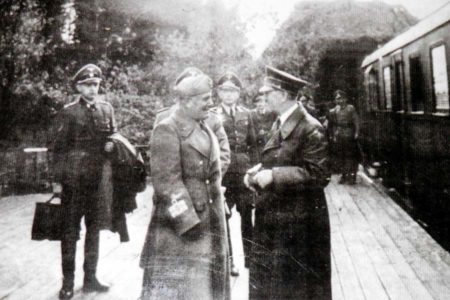
However, Ciano’s greatest gift to historical posterity was his diary written between 1937 and 1943.
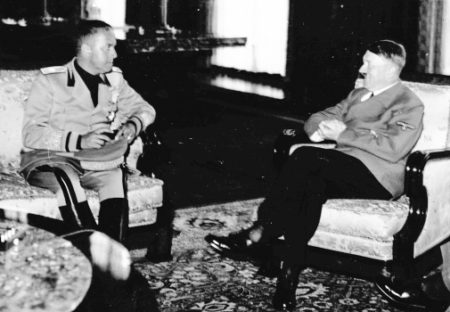
Did You Know?
Did you know that while almost impossible, there are several documented successful escapes from KZ Auschwitz II-Birkenau? One of those escapees was Benjamin Samuelson (1925−c. post 2003). Deported from Romania at the age of fourteen, Benjamin was subjected to imprisonment at several camps before arriving at Auschwitz II-Birkenau.
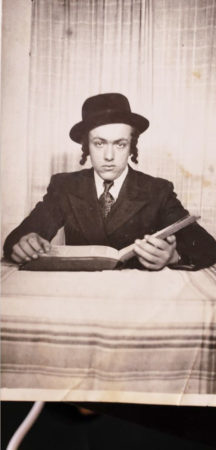
Benjamin was assigned to a Sonderkommando unit responsible for working the gas chambers and crematorium at Auschwitz. Shortly after joining the work detail, he was told the average life span was 90-days before he and the others would be murdered. It was then he decided to escape. Soon after, Benjamin jumped into a pile of clothes and covered himself up knowing the clothes would be dumped outside the camp fences. After the mountain of clothing had been unloaded, Benjamin climbed out and hid for the next ten days. He heard soldiers talk about transferring inmates to other camps and he decided to join a large group outside waiting to board the trucks for destinations outside the fences of Auschwitz.
Benjamin survived the war and went on to live a full life with his family. Like so many eyewitnesses to the Nazi atrocities, Benjamin has passed away. No one can even imagine the nightmares he must have suffered. However, there was one nightmare that haunted him every day.
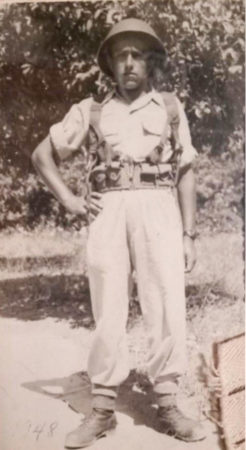
Benjamin’s Sonderkommando was responsible for marching the children to the gas chambers and Benjamin was forced to escort his sister to her death. When asked about his sister’s murder, he would say with tears in his eyes, “I’ll never forget that. But here I am.”
Let’s Meet Count Galeazzo Ciano
Gian Galeazzo Ciano (1903−1944) was born to Adm. Costanzo Ciano (1876−1939) and Carolina Pini (1886−1959). His father was a World War I hero and during the interwar period, founded the Italian National Fascist Party. An ardent nationalist, Costanzo Ciano supported the rise of Mussolini. He and Gian took part in Mussolini’s “March on Rome” (27/28 October 1922) when more than thirty thousand Fascist blackshirts demanded the resignation of the prime minister and the installation of a Fascist government. The morning of 28 October saw King Victor Emmauel II turn over the Italian government to a new prime minister: Benito Mussolini.
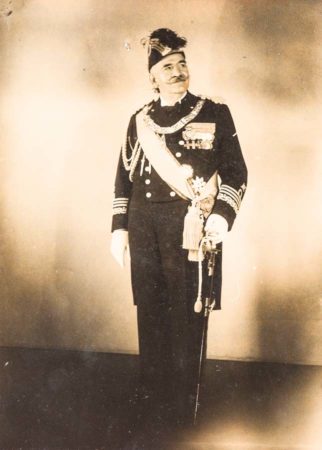
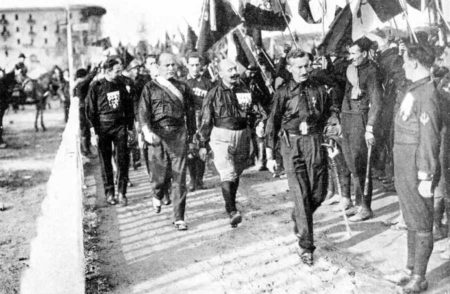
Ciano married Edda Mussolini (1910−1995) in April 1930, and they had three children (Fabrizio, Raimonda, and Marzio). Edda was the eldest of four siblings born to Benito Mussolini and his second wife, Rachele Guidi (1890−1979). Coincidentally (or maybe not?), Hermann Göring’s daughter was also named Edda. Mussolini’s only daughter had a very strong and rebellious personality and combined with her father’s senior government position, serious relationships with men were few and far between for Edda. However, the older and mature Ciano managed to capture her attention and they wed in Rome before more than four thousand guests. Mussolini once said, “I managed to bend Italy to my will, but I will never bend Edda.”
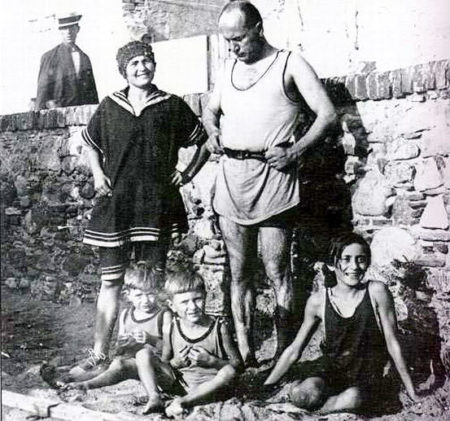
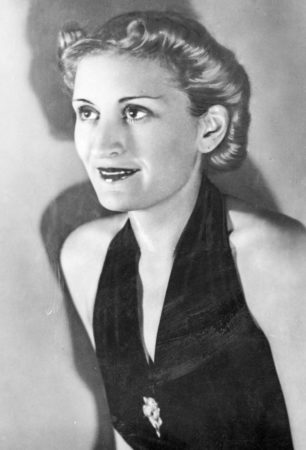
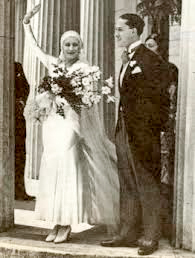
Government Service
Shortly after their marriage, the couple left for Shanghai where Ciano served as the Italian consul. While in Shanghai, each of them embarked on what would become a string of affairs throughout their marriage. (In addition to men, Edda liked her gin and poker.) They moved back to Italy in 1932 and within several years, Ciano became Mussolini’s minister for press and propaganda. In 1936, Ciano was appointed to the post of minister of foreign affairs, a position he held for seven years. In this role, he became a trusted advisor to his father-in-law and began his close association with the Nazi party and its senior members. While Mussolini and Ciano continually waxed and waned over Italy’s commitment to Hitler, Edda was “all-in” and the Führer once commented, “(Edda) is the most German of all Italians.”
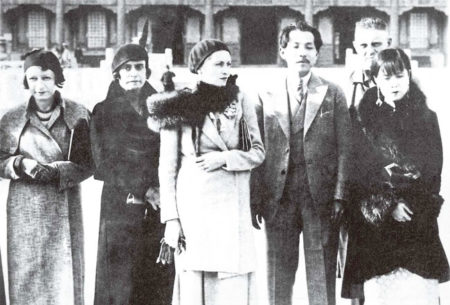
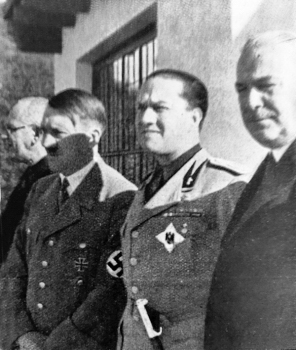
Ciano did not support Italy’s partnership with Hitler in the mid-1930s because he thought a war in Europe would be detrimental believing Italy’s military power was insufficient. (Coincidentally, while they were not against a war, senior German military leaders felt the same about Germany’s military ability to successfully engage in conflict at that point.) When Hitler declared war on France on 10 June 1940, Ciano’s diary entry was, “I am sad ⏤ very sad. The adventure begins. May God help Italy!”
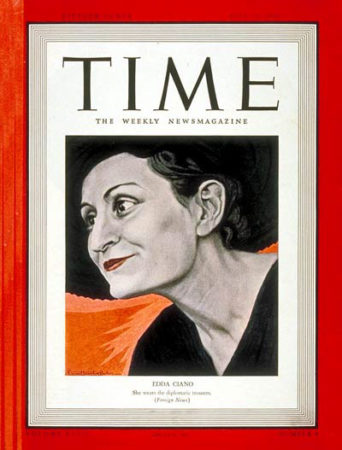
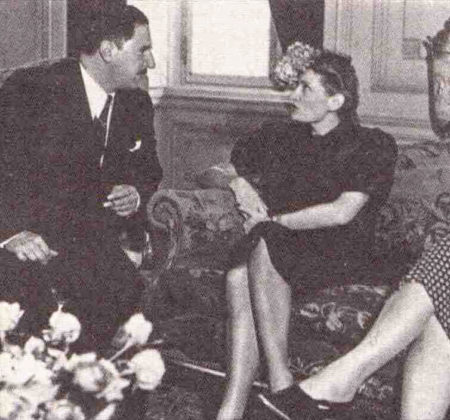
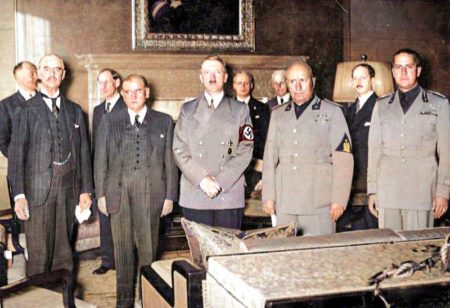
For some time, Mussolini distrusted his son-in-law. In addition to openly making derogatory comments about his father-in-law, Ciano supplied information to a neutral Belgium that Hitler’s army would use the country as a path for the invasion of France. As the Italian army suffered defeats between 1939 and 1943, Ciano became increasingly disillusioned and vocal about his views. By February 1943, the Italian dictator removed Ciano from his post as foreign minister. Ciano was named as ambassador to the Holy See at Vatican City where Mussolini could keep close tabs on what turned out to be a correct assessment of the count.
“Count Ciano . . . was the clown of the evening. In his grey and black Fascist militia uniform, he sat in the first row of the diplomatic box and jumped up constantly like a jack-in-the-box every time Hitler paused for breath, to give the Fascist salute.”
⏤ William L. Shirer
19 July 1940 Diary Entry
Berlin Diary: An Inside Account of Nazi Germany
Invasion of Sicily, Allied Victory in North Africa, and Mussolini’s Downfall
After the Allies invaded Sicily in July 1943 and their victory in North Africa during the fall of 1943, two things became clear. First, Germany was on its way to losing the war and Mussolini was quickly losing his grip on Italy. At this point, Ciano turned against Mussolini and advocated for Italy to withdraw from the war.
On 24 July 1943, during a meeting of the Fascist Grand Council, one of Mussolini’s long-time comrades called on the king to take back his throne, effectively throwing Mussolini out of power. The motion won by a margin of 19 to 8. Ciano cast his vote to overthrow his father-in-law and in doing so, guaranteed himself and eighteen others a future death sentence.
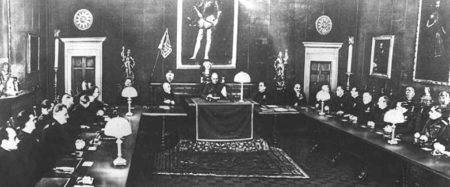
Mussolini was arrested and imprisoned in the mountain resort of Abruzzo. On 23 September 1943, Hitler sent his commandos to rescue his “partner” and then set up Mussolini as the head of a puppet government (Salò Republic, or “Italian Socialist Republic”) in northern Italy.
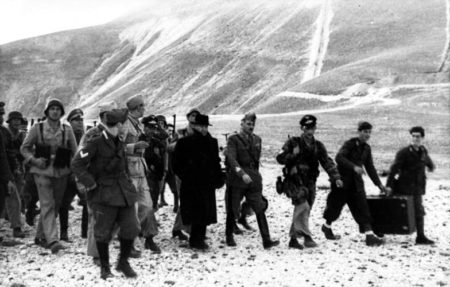
In the meantime, Ciano was dismissed from the government and tried to get his family to Spain where he expected to be protected from the wrath of his father-in-law. Betrayed by Hitler, they were unexpectedly flown to Germany where Hitler turned the count over to a vengeful Mussolini and likely suggested Ciano should be executed for treason.
Betrayal, Trial, and Execution
Not surprisingly, Mussolini had his son-in-law, and five men put on trial for treason. (Only six of the nineteen men who voted to oust Mussolini could be found as the other thirteen went into hiding.) At the 14th-century Castel Vecchio, the Verona trial began on 8 January 1944 and Ciano’s attorney was forced to resign, replaced by an incompetent public defender. The trial was a hoax, the verdict of guilty was preordained, and the inevitable clemency appeal was purposely not handed to Mussolini until after Ciano had been executed. (There were concerns the dictator had decided to grant clemency.)
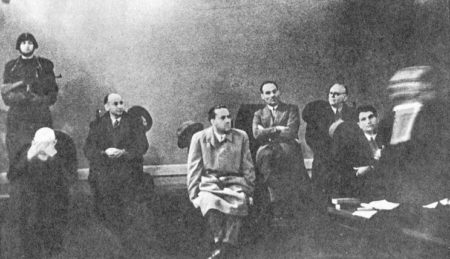
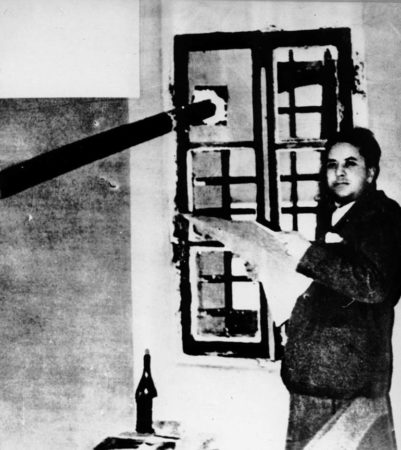
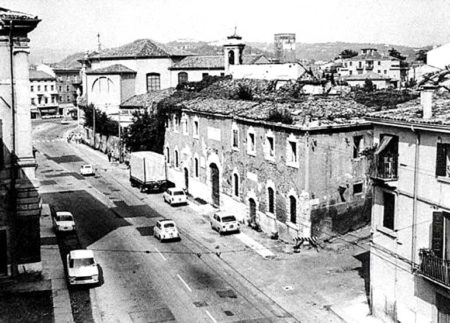
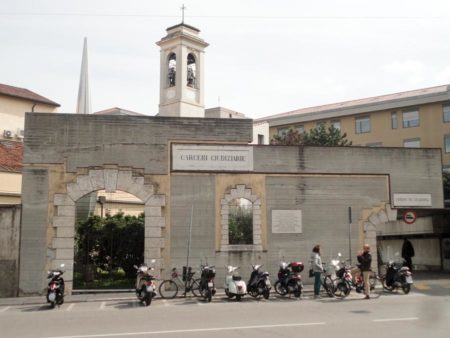
On 11 January, Ciano and four others who voted for Mussolini’s ouster were taken to a field where five chairs awaited them. (The sixth defendant was sentenced to thirty-years imprisonment.) Tied to the chairs, each man was placed with his back to the firing squad in an effort to disgrace them. It was 9:00 a.m. rather than the customary dawn execution. It has been speculated that Hitler ordered the change so that the execution could be filmed. Ciano was the last to be executed and he managed to turn the chair around to face the firing squad. He was the only victim to have bullet holes in the chest.
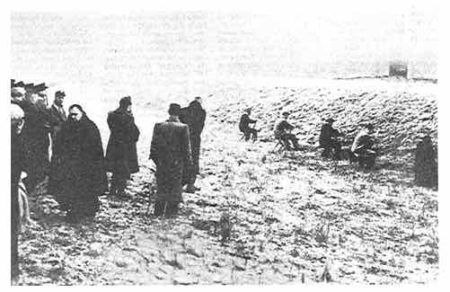
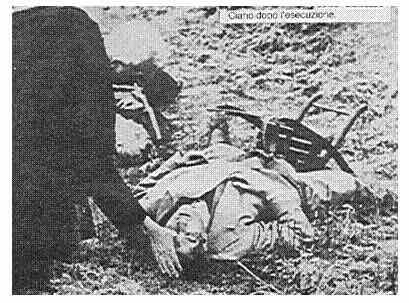
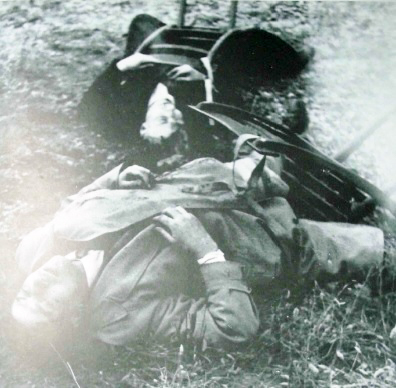
Click here to watch the video The Brutal Execution of Mussolini’s Son-In-Law Count Galeazzo Ciano.
The Diaries
Count Ciano began writing his diary in 1937 when he was foreign minister. Mussolini knew about the diaries and even suggested entries for Ciano to include. In fact, Ciano boasted to everyone that he was keeping a diary. In the end, “loose lips” sank Ciano’s ship.
As it became obvious the Germans (and Italians) were going to lose the war, Mussolini and Hitler increased their efforts to seize the diaries. Ciano’s entries to his diary were politically oriented (as opposed to personal issues) and contained concrete facts, general impressions, and cutting remarks regarding his colleagues. It covers political squabbles, Germany’s war strategy, diplomatic affairs, and gives us the inside story of how Hitler “took over” Italy and manipulated Mussolini. Descriptions in the diary included “not just a bully but a tedious blowhard” (Hitler), “a pathetic child, desperate for praise and baubles” (Göring), and “sniveling, back-stabbing” (von Ribbentrop).
After the vote to oust his father-in-law and subsequent house arrest by Italy’s new hardline prime minister, Ciano began to burn parts of the diary but ended up hiding it after realizing the diary might be useful as a negotiating tool.
Escape
Edda’s close confidant, Emilio Pucci (1914−1992), devised a plan to trade the incriminating diaries for Count Ciano’s life but after Hitler refused to alter the death sentence, Pucci drove Edda to the Swiss border after having sewn the manuscripts into her peasant clothing. Before crossing the border on 9 January 1944, Edda had written letters to Hitler and her father begging them to spare the life of her husband. Pucci delivered the letters personally and then unsuccessfully tried to flee to Switzerland. Arrested, Pucci was transferred to the San Vittore prison in Milan where he was tortured by the Gestapo. He managed to escape and eventually made it to Switzerland. Pucci became an internationally recognized fashion designer when he founded Pucci in 1947 (now owned by LVMH).
For sake of keeping this blog to a reasonable length, I decided not to expand on the escape efforts of the Ciano family or how a German double agent and American socialite played a part in assisting Edda smuggle the diary out of Italy and into the hands of the Allies. If you are interested in the details, I recommend Tilar Mazzeo’s book, Sisters in Resistance.
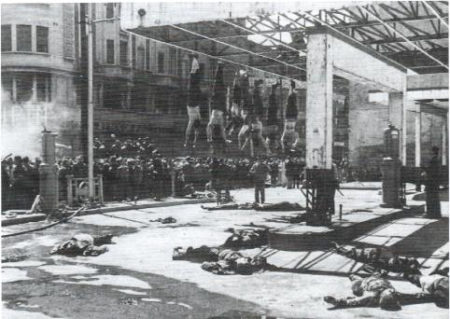
Postwar
After returning to Italy, Edda was arrested and tried for assisting with the rise of Fascism. In December 1945, she was sentenced to two years imprisonment. The diaries were microfilmed and sent to the United States. (The diary also exposed war crimes and it was used as evidence during the Nuremberg trials.) An abridged version was published in 1946 but it was considered inadequate. A later publication (see below) produced a complete version of the surviving diary.
Edda lived for fifty years after the war ended. She was known as “Eccellenza,” a respected title given to government ministers, ambassadors, and bishops. Edda’s niece (and Mussolini’s granddaughter), Allessandra Mussolini (b. 1962) is active in Italian politics and considers herself a Fascist.
Next Blog: “The Missing Emperor”
Correspondence and Commentary Policy
We welcome everyone to contact us either directly or through the individual blogs. Sandy and I review every piece of correspondence before it is approved to be published on the blog site. Our policy is to accept and publish comments that do not project hate, political, religious stances, or an attempt to solicit business (yeah, believe it or not, we do get that kind of stuff). Like many bloggers, we receive quite a bit of what is considered “Spam.” Those e-mails are immediately rejected without discussion.
Our blogs are written to inform our readers about history. We want to ensure discussions are kept within the boundary of historical facts and context without personal bias or prejudice.
We average about one e-mail every two days from our readers. We appreciate all communication because in many cases, it has led to friendships around the world.
★ Read and Learn More About Today’s Topic ★
Benjamin Samuelson interview. Click here to watch the interview.
Brodsky, Evan. My grandfather plotted a daring escape from Auschwitz. Here’s how he cheated death. Fox News. 27 January 2023. Click here to read the article.
Ciano, Edda Mussolini. La mia vita (“My Truth”). New York: Morrow, 1977.
Ciano, Fabrizio. Quando il Nonno Fece Fucilare Papá (“When Grandpa had Daddy Shot”). Milano: A. Mondadori, 1991.
Ciano, Galeazzo. Edited by Malcolm Muggeridge. Translated by Stuart Hood. Ciano’s Diplomatic Papers. London: Odham’s Press, 1948.
Ciano, Galeazzo. The War Diaries of Count Galeazzo Ciano 1939−1943. Brimscombe, U.K: Fonthill Media Ltd., 2015.
Durgin, Paige Y. Framed in Death: The Historical Memory of Galeazzo Ciano. Trinity College, Senior Theses and Projects, 2012.
Hunt, Antonia. Foreword by M.R.D. Foot. Little Resistance: A Teenage English Girl’s Adventures in Occupied France. London: Leo Cooper, 1982.
Mazzeo, Tilar J. Sisters in Resistance: How a German Spy, a Banker’s Wife, and Mussolini’s Daughter Outwitted the Nazis. New York: Grand Central Publishing, 2022.
Moseley, Ray. Mussolini’s Shadow: The Double Life of Count Galeazzo Ciano. New Haven: Yale University Press, 1999.
Moorehead, Caroline. Mussolini’s Daughter: The Most Dangerous Woman in Europe. New York: Harper, 2022.
Mussolini, Rachel. Mussolini: An Intimate Biography by His Widow (as told to Albert Zarca). New York: William Morrow, 1977.
Salter, Michael and Lori Charlesworth. Ribbentrop and the Ciano Diaries at the Nuremberg Trial. Journal of International Criminal Justice, Volume 4, Issue 1, March 2006, Pages 103−127. Click here to read the article.
Samuelson, Benjamin and Jeff Shevlowitz. Abiding Hope: Bearing Witness to the Holocaust. Moscow, ID: Pine Orchard Publishing, 2003.
Shirer, William L. The Nightmare Years: 1930−1940. Boston: Little, Brown and Company, 1984.
Shirer, William L. The Rise and Fall of the Third Reich: A History of Nazi Germany. New York: Simon and Schuster, 1960.
Shirer, William L. Berlin Diary: An Inside Account of Nazi Germany. New York: Bonanza Books, 1966.
Disclaimer:
There may be a chance that after we publish this particular blog, the video links associated with the blog are no longer accessible. We have no control over this. Many times, whoever posts the video has done so without the consent of the video’s owner. In some cases, it is likely that the content is deemed unsuitable by YouTube. We apologize if you have tried to access the link and you don’t get the expected results. Same goes for internet links.
What’s New With Sandy and Stew?
Sandy and I had the pleasure of hosting our friend from Scotland, Roland K. for several days. We visited Roland in Glasgow last year, so it was nice to be able to reciprocate. I think we introduced him to 24/7 air conditioning (we live in southwest Florida). Living on water, we don’t have Florida’s well-known bug problem, so Roland missed out on that experience. Over gin & tonics, we talked a lot about the documentary he is trying to put together about Antonia Hunt’s experience growing up in occupied France.
Thank you to all of you who subscribe to our bi-weekly blogs. It seems there isn’t a day that goes by where we don’t increase our readership. Please let your history buff friends and family members know about our blog site and blogs.
Someone Is Commenting On Our Blogs
What a coincidence! Ed N. contacted me regarding his father who had been a guard at Camp King (click here to read the blog, Camp King) as well as guarding the prisoners during the Nuremberg trials. One of the camp’s German detainees gave him a watercolor of several camp cabins. At the bottom were the signatures of some detainees. Ed asked for assistance in deciphering the signatures. His father passed away without talking about his wartime experiences, so Ed was left to piecing together the memorabilia.
Well, about a week later, Marlane B. wrote us about having been born at Camp King as well as living in Kransburg where Operation Paperclip was affiliated (click here to read the blog, Hang ‘Em or Hire ‘Em). She also has a document signed by camp detainees including “Axis Sally.”
Thank you to Ed and Marlane for sharing part of their personal backgrounds with us. It is always fascinating to talk with the sons, daughters, and grandchildren of the men and women whom we either write about or were part of our blog stories.
Martin P. contacted us in December 2022, and I mentioned him in this section of our previous guest blog, Ten Gifts of the White Bus Rescue (click here to read the blog). Martin’s father (deceased) was one of the 168 downed Allied airmen sent to KZ Buchenwald for their execution (click here to read the blog, Last Train Out of Paris). I introduced Martin to Pat Vinycomb, Stanley Booker’s daughter. Pat was able to make the arrangements for Martin to meet Stan at his home. Stanley is the last surviving airman of Buchenwald and will celebrate his 101st birthday in April. Thanks, Pat, for making this all come together. I know it helped Martin fill in some of the gaps of his father’s journey during the war. I’m certain Stanley enjoyed recounting his adventures. What a memory for someone his age. Heck, I can’t even remember what I had for dinner the previous evening.
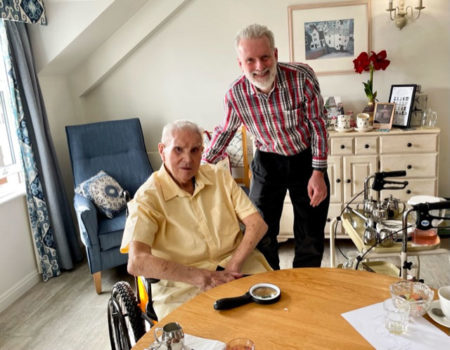
All I can say is, keep those e-mails coming!
If there is a topic you’d like to see a blog written about, please don’t hesitate to contact me. I love hearing from you so keep those comments coming.
Do you enjoy reading? Do you have a hard time finding the right book in the genre you enjoy? Well, Ben at Shepherd.com has come up with an amazing way to find that book.
Shepherd highlights an author (like me) and one of their books. The author is required to review five books in the same genre. So, if a reader is interested say in cooking, they can drill down and find specific books about cooking that have been reviewed by authors in that category. Very simple.
If you like to read, I highly recommend you visit Shepherd.com. If you do, please let me know what you think and I will forward Ben any suggestions or comments you might have.
Click here to visit Shepherd’s website.
Click the books to visit Stew’s bookshelf.
Share This:
Follow Stew:
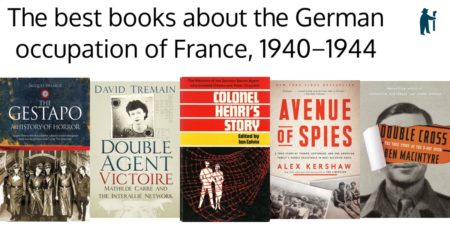
Find Stew’s books on Amazon and Apple Books.
Please note that we do not and will not take compensation from individuals or companies mentioned or promoted in the blogs.
 Walks Through History
Walks Through History
Copyright © 2023 Stew Ross


